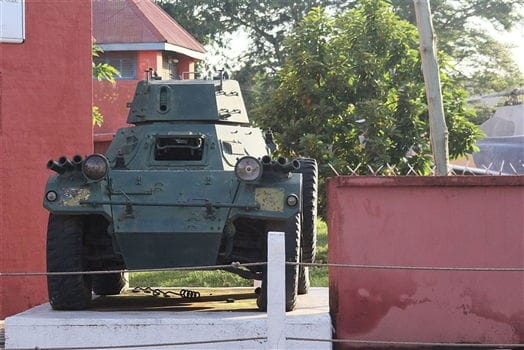Kumasi – one of the oldest cities in Ghana is the heart of the Ashanti Region where traditions dance hand in hand with modernity. Known affectionately as "The Garden City," of West Africa, Kumasi is like a living museum of Ghanaian heritage. It's a city where the air is filled with the scent of flowers, and the language of Twi echoes through bustling streets and quiet alleys. Here, the past is revered, with traditions holding a sacred place even amidst the pulse of modern life.
Brief History of Kumasi
For a long time, Kumasi stood as the capital of one of the greatest civilizations of Africa: the Ashanti Empire. It was a beacon of African civilizations until the British colonisation in the late 19th century reshaped its destiny.
Kumasi is the capital city of the Ashanti region and the ancient capital of the Ashanti Kingdom. It is one of the centres of the history and culture of Ghana. Traditions are still highly valued here, however, they blend in with modern life. The predominant language here is Twi.
Historically and culturally Kumasi is the heart of the Ashanti Region that withholds the essence of Ghana’s culture. Kumasi is also widely known as The history of Kumasi goes back to the 17th century when it was established by the King Osei Tutu I with guidance from the priest Okomfo Anokye. Okomfo Anokye was a renowned traditional priest from the 1600s who is also credited with helping the Otumfour (the title of the Ashanti paramount chief) in establishing the Ashanti kingdom.
The Legend
The priest planted 3 Kuma trees at three different locations and predicted that one tree would live and become the capital of Ashanti. One at Kwaaman, the second one at Apemso-Bankofo, and the third in the village Oboani. The tree at Oboani grew very tiny and, for no apparent reason, was relatively short. The name of the village was changed to Kuma, meaning ‘small Kuma’. The Kuma tree at Apemso-Bankofo did not grow at all. A few weeks later, the leaves got rotten, and the tree fell. It was said that the Kuma tree has died or the Kum tree was dead and the village name changed to Kumawu - ‘the Kuma tree died’.
The 3rd Kuma tree at Kwaaman flourished and grew into a healthy, lush tree. The King and his people would often sit under the tree and enjoy the shade. From there, Kwaaman became Kum-ase, meaning ‘tree has flourished’ and Kumasi became the capital.
In 1873, after a series of wars and battles, the British Army captured Kumasi. It was largely destroyed and unfortunately, not much remains today of its former glory. Part of the astonishing Asante gold regalia nowadays is also exhibited in museums in London.
Exploring Kumasi
Today, Kumasi is among the largest metropolitan areas of Ghana. It is famous and well known for its vibrant and attractive atmosphere. It is the home of the biggest movie production studios (Kumawood), as well as many famous entertainers and movie stars. WWE superstar Kofi Kingston also comes from Kumasi.
Kumasi is also the home of the current Ashanti King or the Asantehene - Otumfuo Osei Tutu II, who is the absolute monarch of the Kingdom of Asante - its cultural region, Asante, and of the Asante ethnic group.
The city pulsates with traditional festivals like the Akwasidae , a vibrant showcase of Ashanti culture. Local industries, from Kente weaving to goldsmithing, are not just businesses but bearers of ancestral wisdom, contributing significantly to the community's identity and economy.
Like everywhere in Ghana, also the soul of Kumasi lies in its people – the 'Kumericans’. Historically known for their bravery and stubborn resilience, the warmth and hospitality just say it all.
Nearby Attractions
Sadly, most of Asante's monumental traditional artefacts and regalia were destroyed during the wars or sent away to Britain. However, in Kumasi, there are more places that you might want to visit to get even better insights into the culture.
The Manhyia Palace Museum built in 1925 by the British, narrates the saga of the Asante people through royal memorabilia. The museum exhibits the residence’s original furnishings and royal memorabilia and tells the story of the Asante people.
Okomfo Anokye Sword Site - situated on the grounds of the Okomfo Anokye Teaching Hospital in Kumasi - is a big part of Asante's history. It stands as a testament to the city's mystical origins. The legendary priest Okomfo Anokye was the one who planted this sword in the earth. It is one of the main artefacts. You might even be lucky enough to run into the Asante king himself. He often comes to pay his respects at this sacred site.
Kejetia Market offers a lively buzzing centre of local life and commerce. It is the biggest and one of the most popular markets of West Africa, hosting thousands of stalls (around 1100) and four times as many people. You can enjoy your shopping spree here all day long! Only 5 min walk from the Kejetia Market is The National Cultural Centre, which has become one of the major attractions in Kumasi. It hosts artisan workshops, a performance centre, a museum, a library, and a craft shop. On public holidays, various types of performances take place in the afternoon.
The Kumasi Fort and Military Museum are one of very few military museums in Africa. It was built in 1820 by the Asantehene Osei Tutu Kwamina. The vast collection showcases various weapons, medals, cars, photographs, and portraits showing the evolution and development of the Gold Coast Regiment of the colonial era, to the present-day Ghana Armed Forces.
Lake Bosomtwe , shrouded in folklore, offers a serene escape and is one of those must-see places in Ghana. Local legends state that once upon a time, a hunter chased an injured antelope in a forest and it ran towards this lake and was never seen again. To this day the lake is viewed as sacred, and the locals believe that when people pass away, they say their last goodbyes to the river before entering the spirit world.
Ashanti traditional buildings stand as architectural marvels of a glorious past. These beautifully decorated buildings are also on the UNESCO World Heritage list and are probably the last testimony of the unique architectural style of the great Asante Kingdom.
Planning your trip: A few tips for visiting Kumasi
Reaching Kumasi is a journey through Ghana's picturesque landscapes, accessible by road or air. The best time to visit is during the dry season, from November to March. Don’t forget to pack essentials like sunscreen, insect repellent, and a camera to capture the city's many wonders.

Hi, I’m Desmond, I am a GhanaTRVL Insider.























Comments